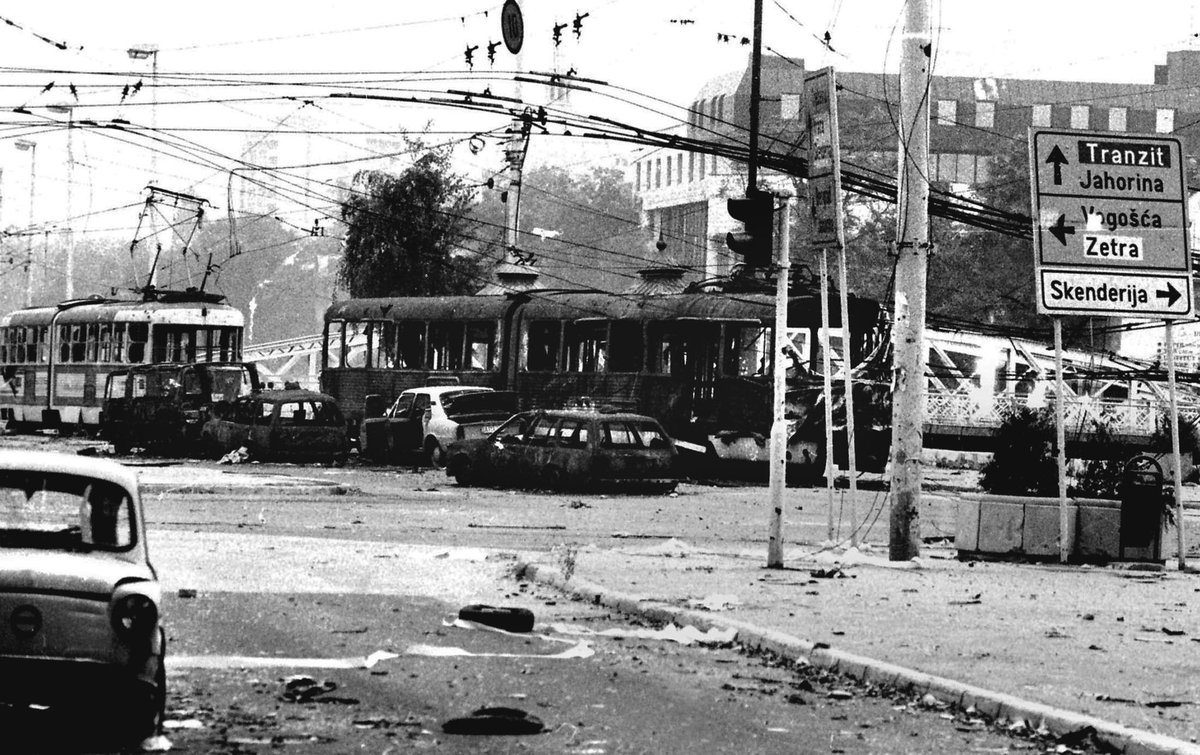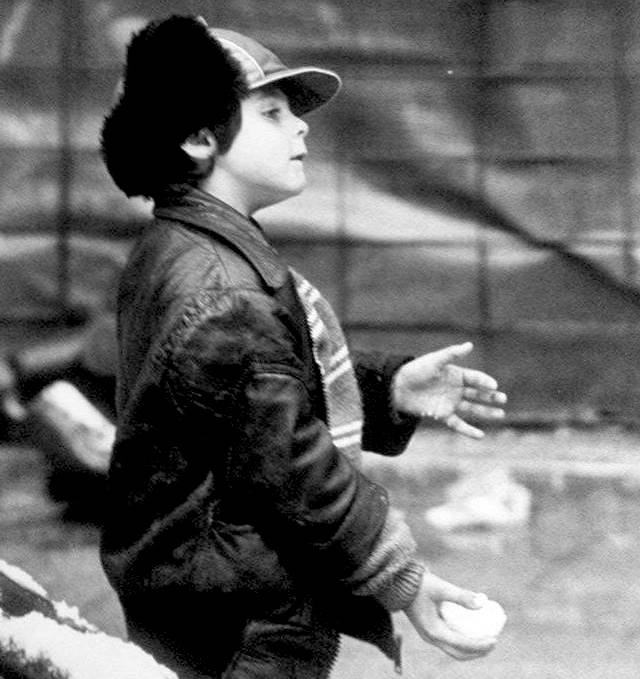
Sarajevo is...
by Aleksandar Hemon
˜
The taxi driver who drove me from the airport and, when I observed that the leaves were already beginning to fall, replied: “Why, yes, first watermelons, then lessons,” which, on close analysis,
#Sarajevo
@SashaHemon
by Aleksandar Hemon
˜
The taxi driver who drove me from the airport and, when I observed that the leaves were already beginning to fall, replied: “Why, yes, first watermelons, then lessons,” which, on close analysis,
#Sarajevo
@SashaHemon
I understood as representing a magic formula to describe the gradual approach of autumn. The moment when, from Jekovac, after the Ramazan cannon fires to indicate sunset, you see the lights on all the minarets of Sarajevo simultaneously ignite.
The clatter of the first morning tram, echoing through the empty streets of the city. The coldness of the buildings from the Austro-Hungarian era and the staircases inside them, with their treads worn by the soles that have climbed them for more than a century.
Somun—soft, white bread—(scattered with seeds) from the baker’s in Kovači. Children’s balls, rolling in the shallow eddies of the Miljacka river. The beauty of Sarajevo women, who always bear in them the imprint of their own past and their own future;
the history of past and future changes: their faces reveal both skinny little girls and mature women, both minxes and careworn matrons.
The sfumato of a cold Sarajevo morning, before the sun steals up behind the mountains, and mist drifts up the slopes.
The sfumato of a cold Sarajevo morning, before the sun steals up behind the mountains, and mist drifts up the slopes.
Škembići—tripe—at Hadžibajrić’s. The fruit that grows on bushes throughout Sarajevo, known as “white berries.” The slender cat, a striped market stray, that rolls on the pile of Persian carpets in Morić-han. The round tray that rotates on the tip of a waiter’s forefinger.
The pigeons’ rally on Sebilje. The aroma of cheese, cream, meat, and marble in the market.
The peal of church bells at six o’clock in the morning.
The peal of church bells at six o’clock in the morning.
The way the Sarajevo accent bursts the speaker’s lips, because of the rumbling consonants and swallowed vowels, which looks particularly good on women with full lips.
Autumn leaves, ankle-deep, in Wilson’s Walk, and the sound of ripe chestnuts breaking off, hurtling through the branches, then hitting the soft carpet of leaves. A white-wine spritzer at Ramiz’s. The scent of old cellars: coal, dust, tubs for souring cabbage,mildew.
The lights that glint on the hills around Sarajevo at night, like stars that fall slowly, the way snowflakes do. The sound of a deflated ball kicked around by children in the open spaces of New Sarajevo. The hissing of rain on streets under the wheels of cars.
Carved cartridge cases in the Kujundžiluk.
The chirping of radio stations in taxis.
The rheumatic hands of old men behind their backs as they watch a game of chess with giant pieces in front of the ghostly Department Store.
The chirping of radio stations in taxis.
The rheumatic hands of old men behind their backs as they watch a game of chess with giant pieces in front of the ghostly Department Store.
Ice cream with the flavor of “Egyptian vanilla” (whatever that is) at the Egypt pastry shop.
The green turf of Željo’s Stadium. Asphalt full of hollows, holes, puddles, and the “roses” of shell craters, never perfect, always spattered.
The green turf of Željo’s Stadium. Asphalt full of hollows, holes, puddles, and the “roses” of shell craters, never perfect, always spattered.
The brief jerk of the head to one side that accompanies the response “Okay…” to the question, “How’re things?” The intense colors of autumn fruit and vegetables softened by the shade of the beams at the Markale Market.
Meatballs—ćevapi—anywhere in town.
Soda that goes to seed in less than fifteen minutes. The hardness of the stone you touch when you bend to drink a mouthful of water at the Gazi Husref-Beg Mosque.
Soda that goes to seed in less than fifteen minutes. The hardness of the stone you touch when you bend to drink a mouthful of water at the Gazi Husref-Beg Mosque.
The hum of Sarajevo heard from Hrid or Trebević - all the sounds of the city merged into one. The silence that accompanies the first snowfall, as though everything and everyone were hushed with wistful excitement.
The long shadows of the trees in the Big Park on a September afternoon. The collection of stuffed animals in the National Museum.
The statues in front of the National Bank, eternal guards of the Čeka, holding helmet-lights above their heads. The rhythm of the tread of the elderly in Ferhadija, harmonizing with the rhythm of their conversation—a syntax of footsteps.
A cheap football shirt with the name Zinedine Zidane on the back of a grimy boy. Tito’s portrait in the goldsmith’s in Ćaršija. Underpants and stockings in the passage beside The Imperial.
The aroma clothes carry in them after a stay in Sarajevo: a mixture of sweat, cigarette smoke, ćevapi, washing in Sarajevo water, and drying in the open air.
The people of Sarajevo: the clever and the churlish, the greedy and the handsome, the weary and the young, youthful and crazy, rich and wretched, sturdy and sick, tall and rundown, the angry and the underhanded, the tricksters and the brilliant,
the Diaspora and locals, children and adults, the faithful and infidels, the powerful and the pious—all in all, nearly four-hundred-thousand urban atoms.
And let’s be honest, there’s no end. You either love Sarajevo or you don’t.
˜
Sarajevo is... by Aleksandar Hemon @SashaHemon
And let’s be honest, there’s no end. You either love Sarajevo or you don’t.
˜
Sarajevo is... by Aleksandar Hemon @SashaHemon
• • •
Missing some Tweet in this thread? You can try to
force a refresh











